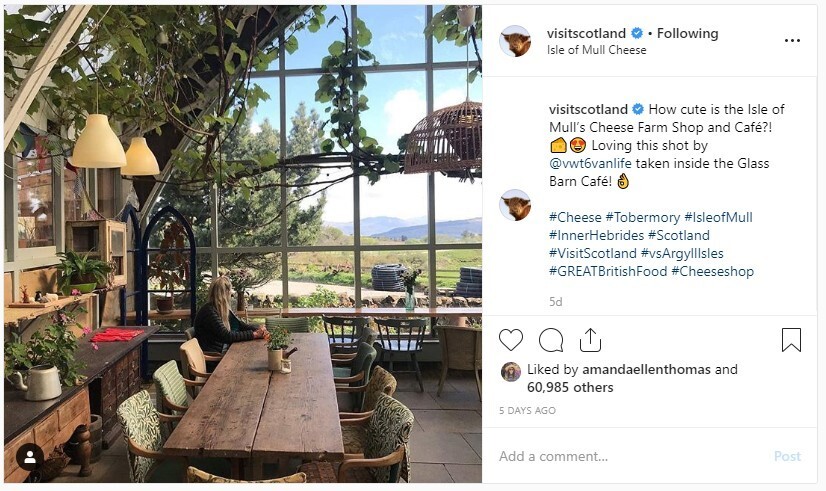Can Instagram help tackle over-tourism?

Steve Hope, Senior Manager of our Marketing Data Performance & Social teams, discusses how we use social media to reflect a more sustainable spread of engagement across Scotland’s regions...
As Senior Manager of our Marketing Data Performance & Social teams I’m particularly focused on driving meaningful and measurable impact from social media. As one of the primary sources of inspiration, social media and especially Instagram are also potential contributors to over-tourism. A goal of our consumer social channels is therefore to amplify User Generated Content (UGC) which reflects a more sustainable spread of engagement across Scotland’s regions – showcasing the hidden gems and off the beaten tourist track opportunities.
While the spread of our posts and the reach they achieve for each region is an improvement on what the estimated UGC across social media achieves, we still struggle to achieve enough reach for some of the regions that would benefit most from it.
This isn’t because some regions don’t work on Instagram – in fact over the past 12 months the average reach for our posts is very similar across all regions. The standard deviation between regions is only 6% of the mean.
To achieve enough reach throughout the year for all of our regions there needs to be a high calibre of UGC available for us to share. The bar is set so high because Instagram is a competitive environment. To reach a good portion of our followers and beyond, we need to maintain a high level of engagement on every post. A high level of engagement (as well as a history of high engagement) drives Instagram to keep serving our posts into people’s feeds. If we lower the bar, we potentially lower the reach of not just that post but all future posts.
When we do find highly engaging UGC for our regions it really works. Our highest reaching post ever was not in one of the honey-pot areas, but was for Argyll & the Isles, and it wasn’t a landscape – but the interior of a cheese café.
As illustrated in the chart earlier, providing the same calibre of post is maintained, the region isn’t a critical factor for the audience – they’re effectively neutral to regions. It’s the content creators who are bias and typically favour specific, high profile regions.
Our second highest reaching post ever was for another interior, this time an Inverness bookshop.

Image credit: @mozicofo
What sets these posts apart is they challenge our audience’s preconceptions of Scotland, and that’s why they respond so well.
Likewise, still within our top 1% of posts ever is this Glasgow mural, which challenges the traditional narrative of what Scotland is about.

Image credit: @scohut | Artwork: @smugone
When we analyse the response we receive on our consumer social channels to different kinds of post subjects and concepts, we see the Instagram audience distinctly responds well to having their preconceptions challenged i.e. finding something new or realising a new perspective.

The great news is that any region can do this – any region can challenge the preconceptions about what Scotland means, as the cheese café, bookshop and urban mural demonstrate. Success on Instagram isn’t limited to those regions fortunate enough to inherit those natural and cultural assets that are so stereo-typically Scottish, because the audience, on this channel at least, wants to take the conversation beyond that.
Through working with industry to identify opportunities, bringing content creators to Scotland and inspiring individuals through our owned channels, we can help mitigate some of the impact social media has on over-tourism.
To work with us please email social@visitscotland.com or use our hashtags #VisitScotland and #ScotlandIsNow.
Can Instagram help tackle over-tourism?
Steve Hope, Senior Manager of our Marketing Data Performance and Social teams, discusses how we use social media to reflect a more sustainable spread of engagement across Scotland’s regions



